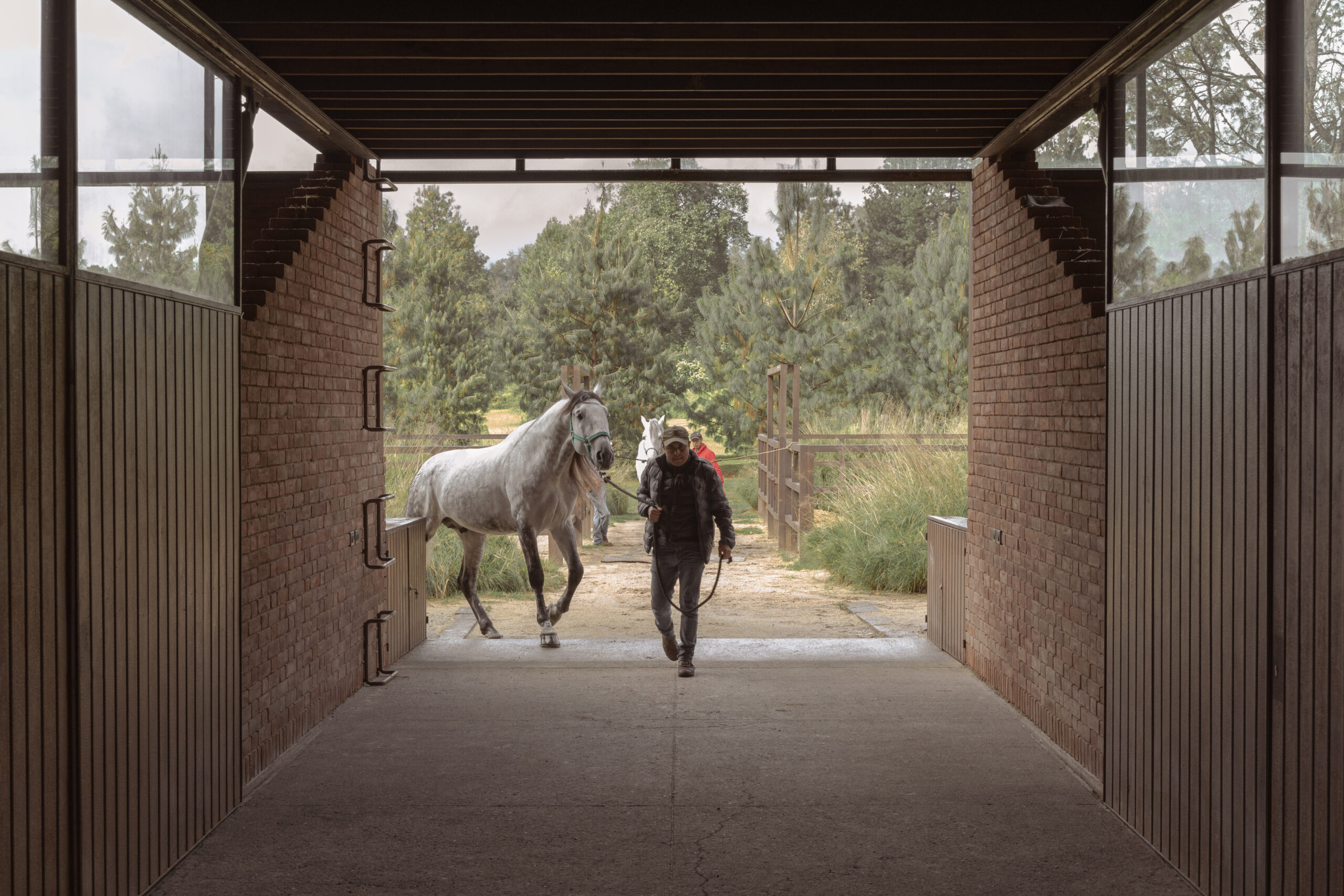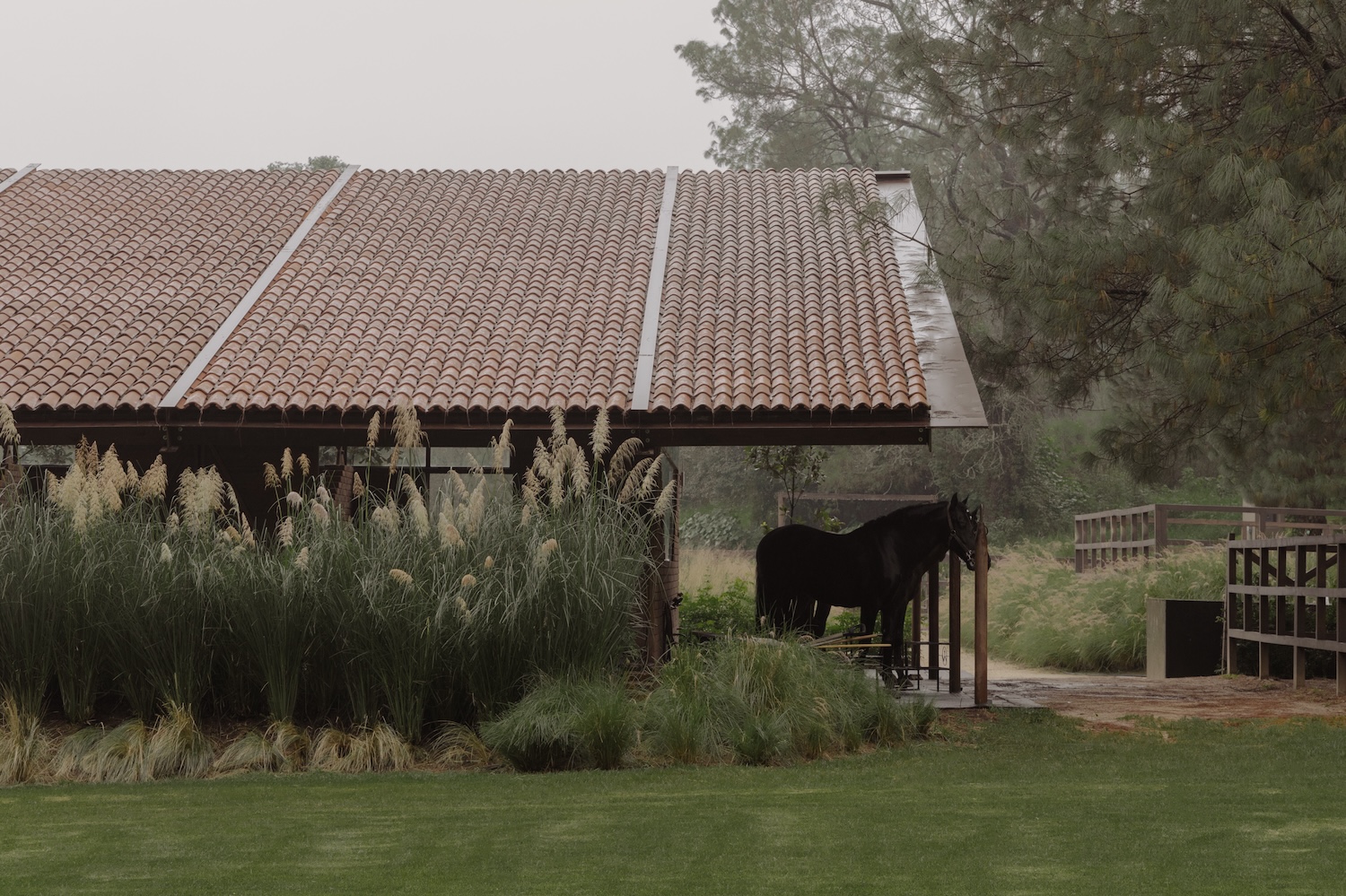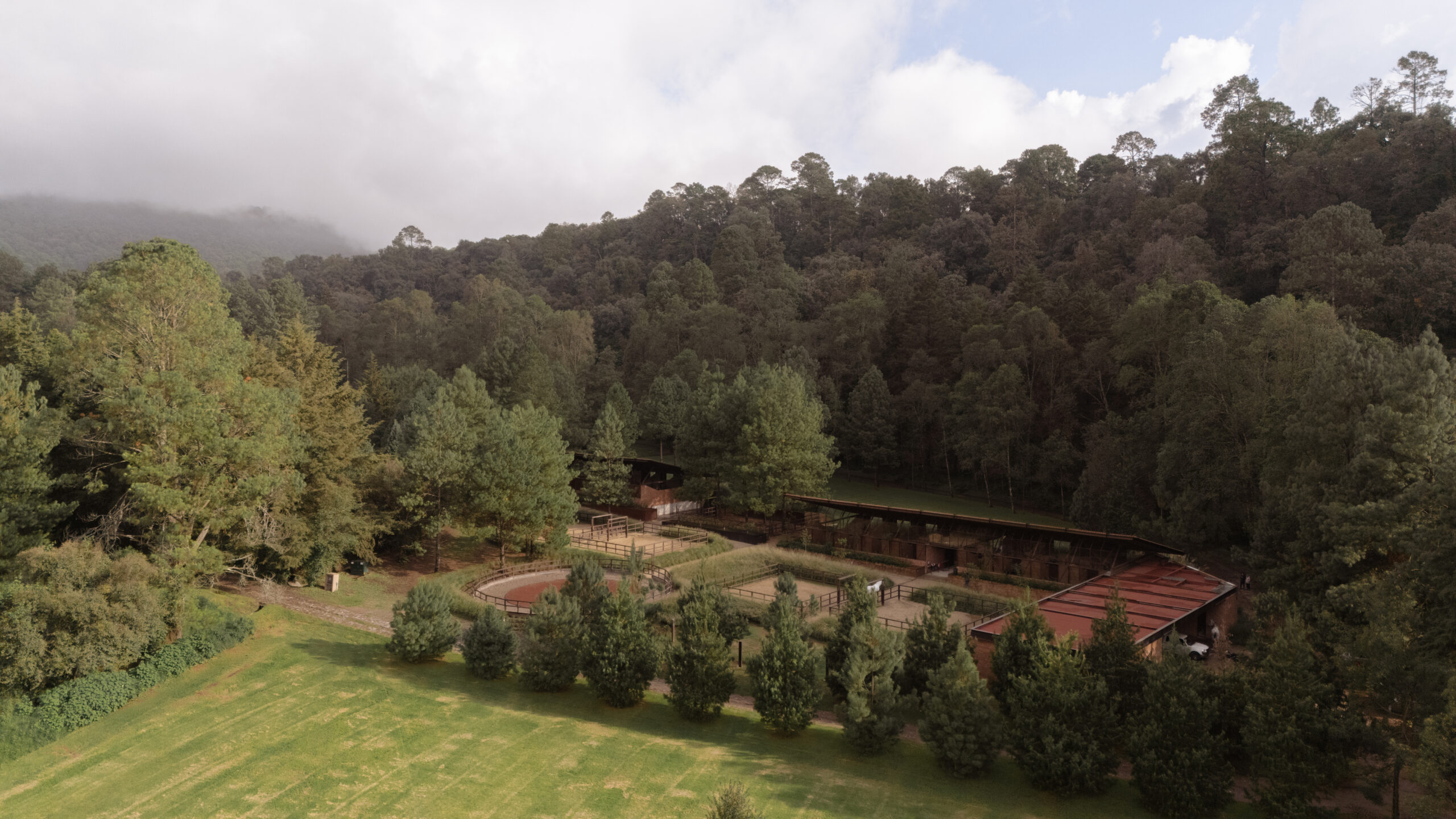
From the borders of Hípico San Ramón to Whistlejacket
Throughout time and history, horses have been eminent for their grace and majesty. They have offered companionship, service and invaluable contributions to daily life. And so George Stubbs represented it in his painting called “Whistlejacket”. The artwork, dated in 1762, depicts a renowned thoroughbred racehorse and puts emphasis on the elegance and beauty of the magnificent animal.
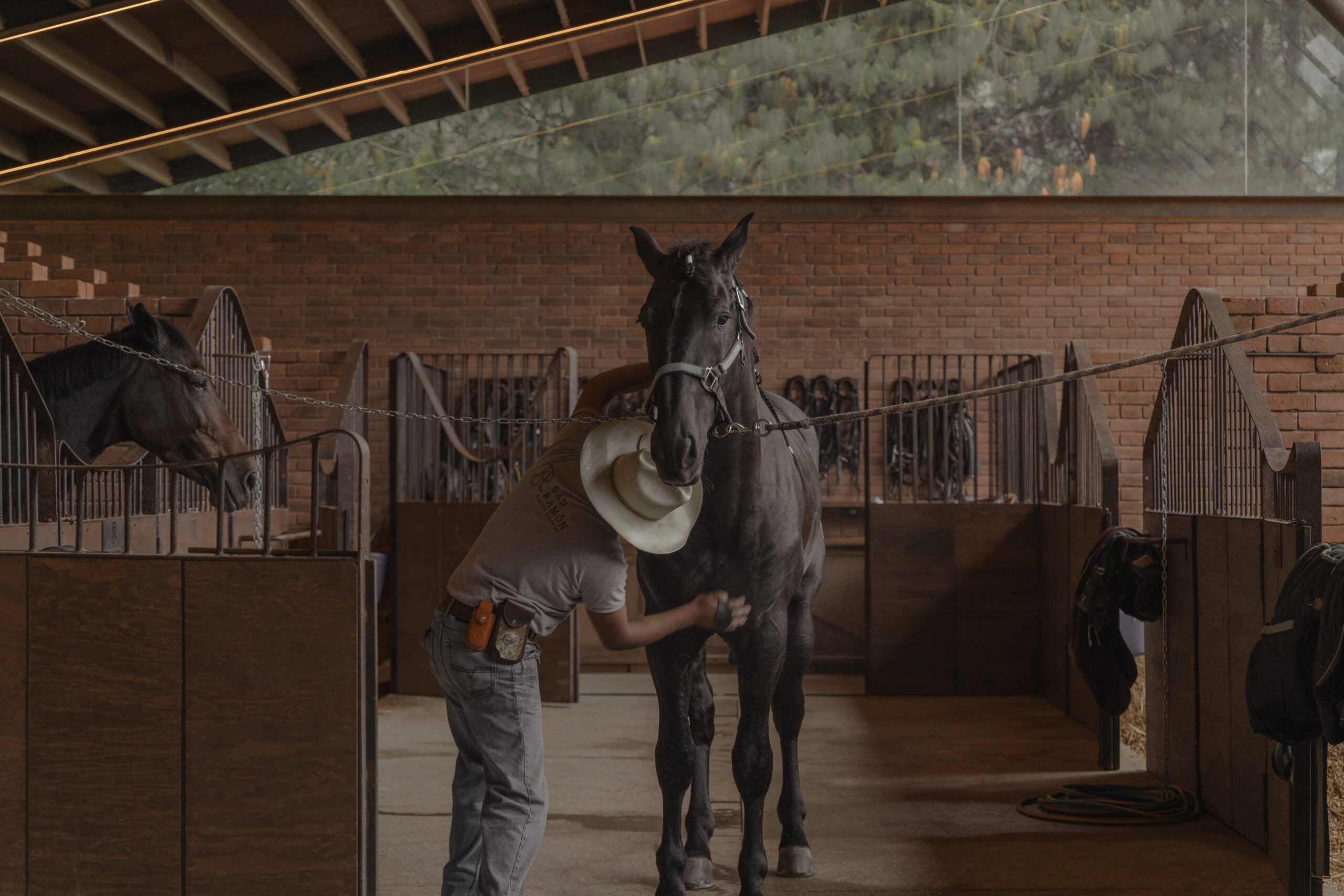
Could be daring to say but horses are probably those animals everyone, regardless of origin or social status, truly admire. Their beauty, strength and courage is above any other matter, especially when we can see them and their untamed spirit of nature. Located in the forest of Valle de Bravo, Mexico, Hipico San Ramon was born with the aim of being that perfect shelter for horses so they do not feel like captured beasts.
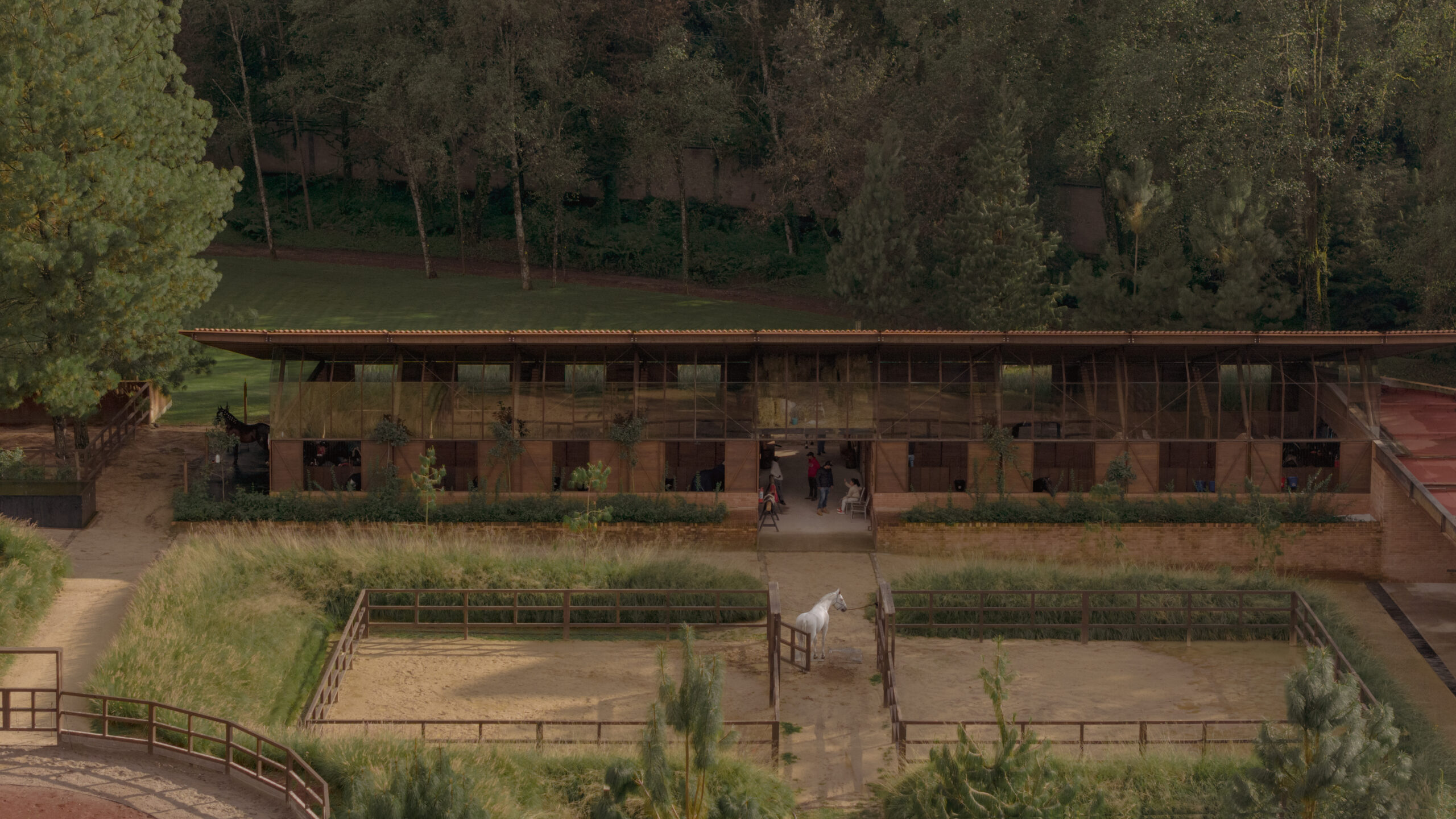
Monica Ledezma, the architect designing the project, pursued the structural excellence for the use of its space to achieve the settled goal. The integration of Hipico San Ramon’s architecture and natural environment played a key role in the project bringing comfort for both the animals and the people, offering a haven of tranquillity and grace. Hipico San Ramon embraces the ocher tones that stand out and contrast with the abundant vegetation. “We decided to use wood, clay tiles, red bricks, as well as steel beams and corten cancelling,” explains Monica. The search for comfort, openness, shelter and fluidity were the main axes within a country environment with a border of oak trees as a visual finishing touch.

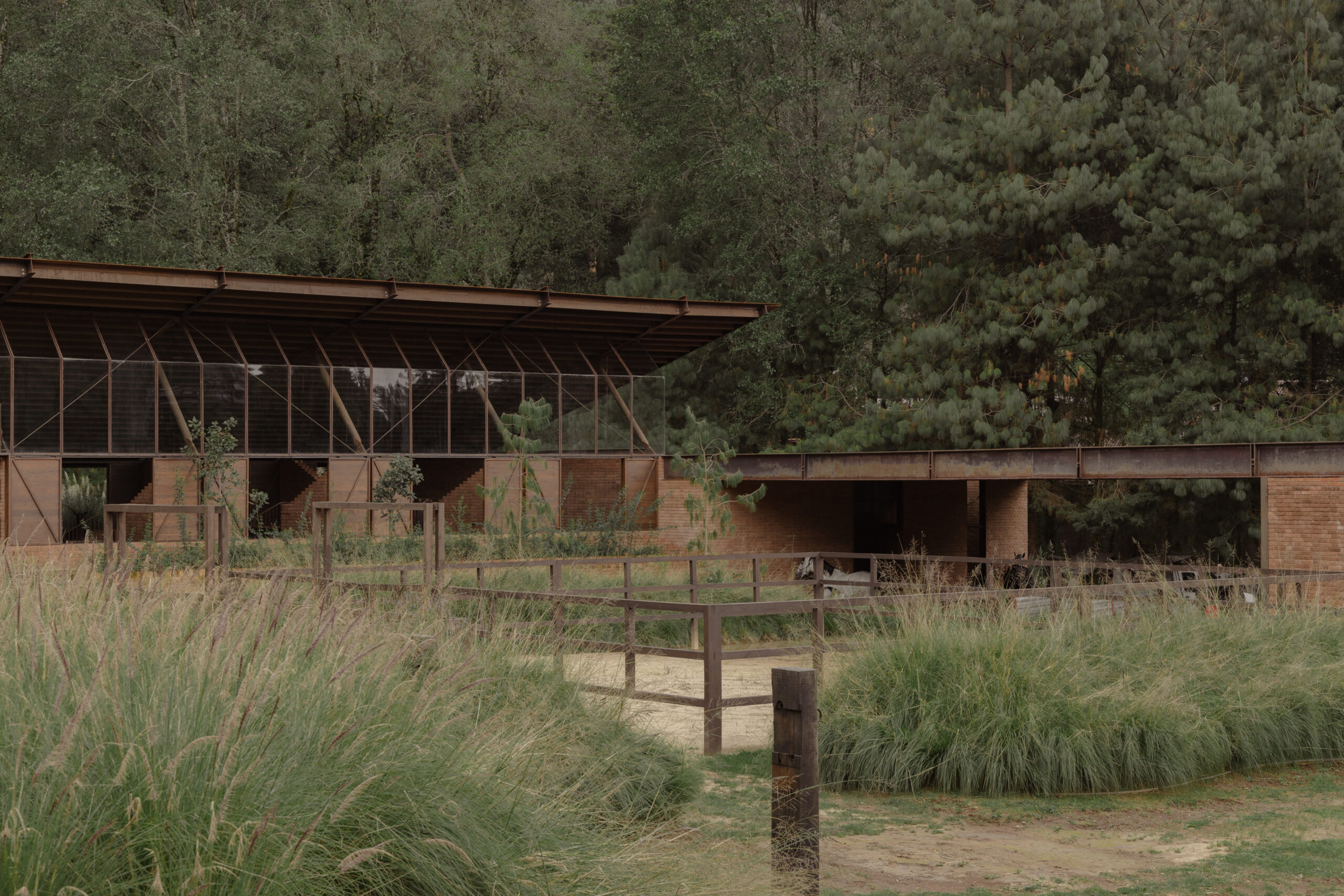
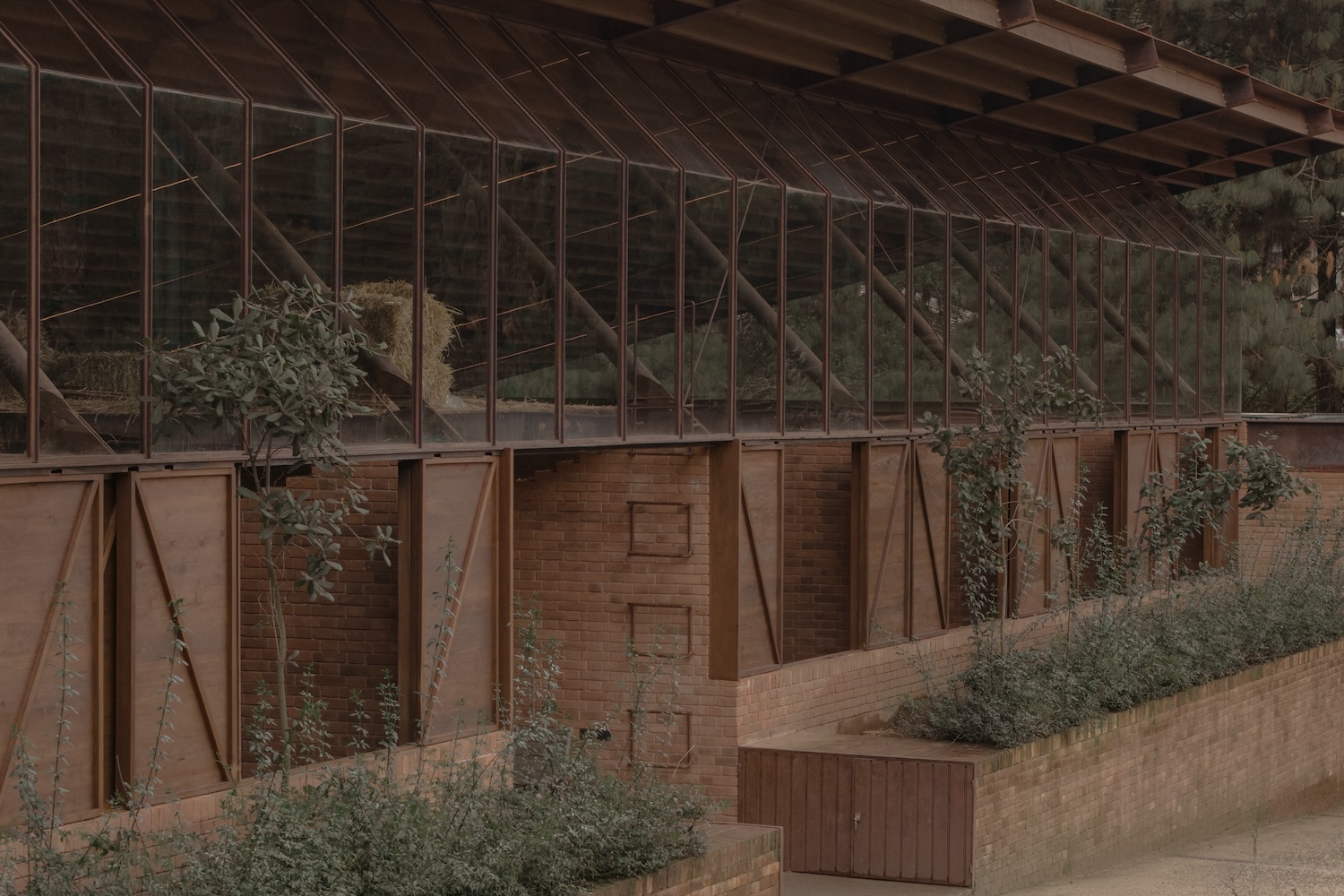
The buildings function with a constructive logic of pieces that fulfil utilitarian functions first, and as a consequence the product is a harmonious organism of diagonal, staggered, vertical, rigid and stylized geometries that work together as a unit, with the force of Whistlejacket, the thoroughbred racehorse that won the race in York in 1759.
